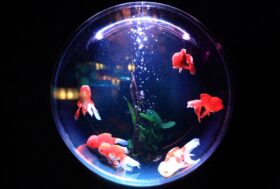FROM THE EDITOR
Once upon a time I was a natural environmental science graduate, and one of my dilemmas at age 21 was whether or not to undertake a funded PhD on peat bog reclamation. There is no need to cut a long story short at this point, because it really didn’t take me long to decide. It was the PhD or my PGCE, and the lure of teaching was strong. I based my decision on the comparison of spending my days in lively classrooms or toiling in a windswept and eerily quiet landscape. I am also a bit of an impatient person at times, and the idea of the slow scrutiny of the ecosystem with at least three years before anyone was likely to gain insight from my research, compared to the urgent demands of planning lessons, creating relationships and experiencing the learning of others was very stark. So, I became a teacher. Thence followed a decade teaching geography, followed by what is now nearly two decades in universities working in the field of teacher education, far away from that promised peat bog. But, there is always a legacy of learning and I often now draw on my roots as an environmental scientist as I reflect on how we can 'develop a learning culture'.
In this editorial I am going to use my conceptual understanding gained through studying and teaching geography and environmental science to suggest metaphors for educational understanding and practice. To do this I will reflect on five related themes which allow me to develop and refine my own conceptual frameworks, or ways in which I understand the world around me. This is not a deeply theoretical view, I will not discuss research related to ecological or complexity thinking for example. Instead it is a sense-making perspective. The themes are diversity, systems, scale, adaptation and sustainability, and each one offers me a way of framing my reading of the five sections of this issue of Impact.
But first a quick note about ‘culture’. Many would automatically think of culture as describing aspects of society defined by our traditions and ideas, or more specifically of the arts and other physical artefacts of intellectual human activity. Others see culture in organisational terms, in the ways that things are conducted and the habits and behaviours that result. In environmental and life sciences we use the term ‘culture’ to mean both the growth of cells or micro-organisms to use for scientific purposes, and also the deliberate activity of keeping and reproducing organisms to sustain the production of a desirable output (such as food or bio-energy). All of these definitions suggest complex interactions, the likelihood of change over time and the creation of tangible, recognisable outputs and objects. Learning cultures are no different, they are not static, but instead they are dynamic; and through this dynamism is the opportunity for a wide-range of factors to influence the flow of ideas and development of practices. However, there is the possibility of loss as well as of development. Learning cultures, like ecosystems (even peat bogs) need our attention and care.
Diversity
Our landscapes, weather systems and living organisms are more diverse than any of us will ever gain first-hand experience of; and yet we can learn about, value and respect that diversity and we can recognise that organisms exist in habitats that sustain them and that they co-create. We could go further and note that each species inhabits a specific niche in the ecosystem, a way of being in the world, and plays a specific function as a result. In section one we find discussion related to the effectiveness of different approaches to teaching. A quick glance down the contents page illustrates quite how diverse these are. In acknowledging this we are accepting that a characteristic of successful learning cultures is their pedagogic range. We might consider how certain approaches occupy certain niches, but that each of these offers learners (and teachers) a new way of being in the world. So rather than privilege certain pedagogies or pigeon-hole learners, we can work to sustain the richness of our education cultures and celebrate the diversity of learning.
Systems
One of the key principles of understanding the natural environment and indeed how humans have altered it over time is a recognition of the systems that govern it. At its heart this reminds us that every dimension is inter-connected with other dimensions; think food webs, water cycles and weather, these not only exist as systems in their own rights, but also as systems which influence each other. We know that if we strip the landscape of trees, not only does that cause a loss of habitat, but we also increase soil erosion and flooding, and that this has knock-on effects on our river systems and in our towns and cities. This understanding of the inter-connections and the potential for disrupting or altering finely balanced environments can help us to reflect on the articles in section two, which focus on creating a productive classroom environment. Energy and substances flow through every environment; sometimes sustaining, sometimes altering and sometimes destroying them. We can draw parallels with our classrooms, the decisions we make as teachers cause ripple effects, may impact children differently and wash out into the wider school community in ways that we had not anticipated. Being better informed enables us to make more nuanced decisions and to regulate these impacts, helping us to achieve the positive and purposeful environment that all children and young people deserve.
Scale
One of the joys of studying natural environmental science was the opportunity to learn about our world at a myriad of scales. One afternoon I would be using an electron microscope to study minute details of crystallography in the geology lab, the next morning I might be on a biology field visit to a bluebell woodland, and by the end of the week I would be in a geography seminar debating the implications of gaia theory for our understanding of the earth as a synergistic and self-regulating whole. It was this unique combination that helped me build deep conceptual understanding which was transferable across the wide discipline and into real life. I don’t think it is stretching the metaphor too far to consider approaches for providing academic and pastoral support (section three) with a sense of scale. There is a need to understand what support is needed for individuals as our society changes, what roles policymakers, multi-academy trusts and LAs, individual leadership teams in each school, each teacher, each allied professional, each family and each peer group play in creating an educational infrastructure which is up to the essential jobs of providing appropriate support for each child and young person.
Adaptation
There is no doubt that change is one of the constants in our environment. We can see how the geography and ecology of our world has been shaped over geological timescales, how agriculture, industrialisation and globalisation have created new environment dynamics at local, regional and global scales. We know that evolution, extinction and adaptation occur within species; that foxes have learned how to successfully live in cities, and that an abandoned arable field can revert to woodland through succession. Our living world is characterised by adaptation and so is our profession. It is common to hear that challenging workplaces need employees who adapt as the demands on them change, and that success in initial career stages is only the foundation for ongoing career-long learning. In section four the focus is on creating a teacher learning culture. Let’s remind ourselves of the multiple meanings of culture discussed earlier. A successful professional learning culture is one which exists in the fabric of the school, in the habits, behaviours and artefacts which are valued and shared at every level. It is also characterised by growth, and that growth is both formative and creative, resulting in valued outputs, new behaviours and better adapted practices. There is no means by which we can meet the needs of pupils and students if we don’t enrich the learning of their teachers.
Sustainability
Sustainability is probably the most significant of all the concepts that have resonated with me from my degree in environmental science to my current life as a practitioner and researcher in the field of teacher education. There is no doubt that we are experiencing dramatic environmental changes that are compromising our current quality of life as well as jeopardising our future. Australia is experiencing record-breaking temperatures, we have seen a rapid decline in insect life (think about how few insects get splattered on your windscreen compared to twenty years ago), and many parts of the world rely on huge polytunnels and irrigation systems to create suitable environments for sufficient food production. We are not living as sustainably on this planet as we need to. In our schools we also feel huge pressures that compromise the sustainability of our profession, as illustrated by teacher burnout, rapid curriculum changes, a crisis in teacher recruitment and retention, and highly performative working environments. Some of our children and young people are no longer provided with an opportunity for sustained learning within their local schools, and there is a too frequently unmet demand for quality special educational needs provision. We need to address this, and I would argue that we start with recreating our profession. In section five article offer insights into the importance of collegiality, mentoring and research. Framing our working environments around these activities make sense to me. This is because educational change is rarely linear, and the black box of teaching and learning is complex. Our schools and our profession are dynamic and what can seem to be casual mechanisms are rarely that simple. Sometimes we are not even in agreement about what learning we value. These truths can sometimes feel overwhelming; as an individual teacher or school leader we can feel a lack of agency in effecting change. Our voices can seem quietened by those louder, stronger or more dogmatic than ours. But without each of us our education system is not sustainable. Working together in ways that are proven to have positive impact is not just desirable, it is essential.
Read on
In this issue of Impact (and its accompanying online edition) the authors explore a wide range of practice and research. As readers you will come across both familiar and new names, just as you will come across content which reassures you that you are on the right track, as well as content which causes you to question your understanding and practice. This is as it should be. Developing a learning culture, whether you are focused on students or colleagues, is a complex dynamic, producing as many dilemmas as it does apparent truths. Our understanding of what research is most relevant to us as teachers and whose practice we should deem credible and worthy of adopting is ever-expanding. The articles in this issue demonstrate that as teachers, school leaders, governors, advisors, consultants, teacher educators and academics we need to embrace the complexity and use it as a source of inspiration and growth.
I hope that you will engage with this issue in the spirit of scholarship. It is important to read, but it is equally important to think, and there will no doubt be moments of disquiet and reflection triggered by the content. It is also important to discuss, sense-make with others and to try things out in your own unique contexts. The good news is that there’s a world of inspiration out there; read on.
















































